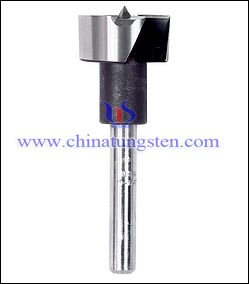Tungsten Carbide Forstner Bits Ⅲ
- Details
- Category: Tungsten Information
- Published on Wednesday, 25 November 2015 12:00
In last part we know that tungsten carbide Forstner bits are characteristic of a center point, cylindrical cutting edges and radial cutting edges, and no mechanism to clear chips. In this part we explain how a Forstner bit works.
Most drills are guided through material by a central point, but Tungsten carbide Forstner bits are primarily guided by the outside rim. This means that they can be used to drill pocket holes, which are holes drilled at an angle; partially overlapping holes; and holes that are on the edge of the material. They have central spurs, but these are normally used to locate and mark a center-point rather than to serve as the actual drill guide.
When the tungsten carbide Forstner bit enters wood, it bores down by essentially spinning fragments up and out with a sawing, rotary motion. The sides of the bit often look jagged and when they first enter the wood they often shear it and leave it somewhat splintery. As the bit’s radial sides continue through the hole, though, the edges tend to smooth out. Most of the time the result is a flat-bottomed hole.

(To be continued. This article is divided into several parts. Here is part 3. For part 2 please refer to http://news.chinatungsten.com/en/tungsten-information/80701-ti-10455; for part 4 please refer to http://news.chinatungsten.com/en/tungsten-information/80737-ti-10467)
| Tungsten Carbide Supplier: Chinatungsten Online tungsten-carbide.com.cn | Tel.: 86 592 5129696; Fax: 86 592 5129797;Email:sales@chinatungsten.com |
| Tungsten News&Tungsten Prices, 3G Version: http://3g.chinatungsten.com | Molybdenum News & Molybdenum Price: http://news.molybdenum.com.cn |